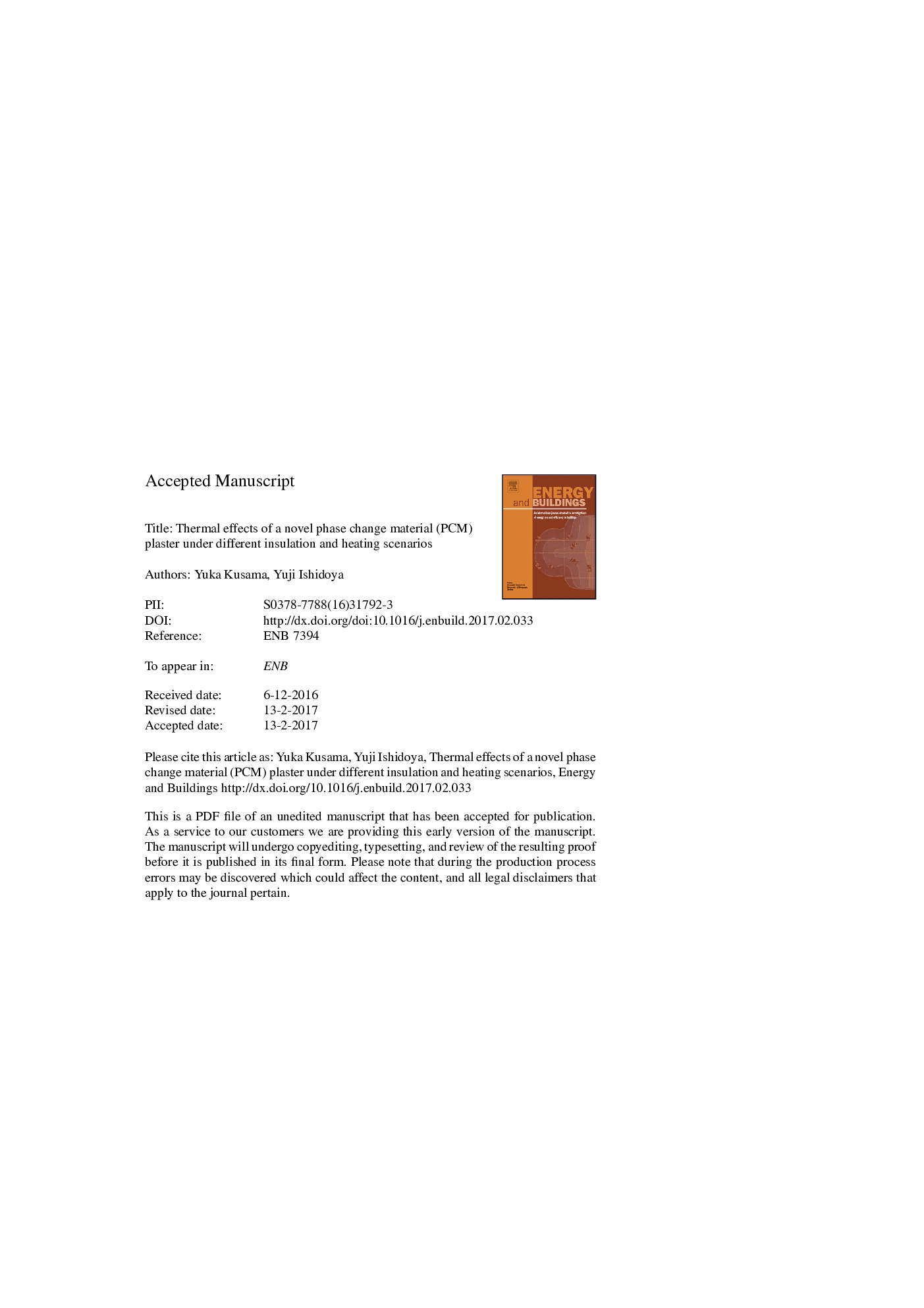| Article ID | Journal | Published Year | Pages | File Type |
|---|---|---|---|---|
| 4919075 | Energy and Buildings | 2017 | 33 Pages |
Abstract
In this study, we investigated the use of phase change material (PCM) plaster as a thermal storage finishing material for the walls and ceiling of a structure with the objective of improving the comfort and energy efficiency of residential environments. The PCM plaster includes microcapsules capable of efficiently storing and discharging heat. When PCM plaster is installed on walls and ceilings that receive significant light and heat from windows, the thermal efficiency gains could be significant. In Japan, plaster is commonly used as a wet interior finishing material. To quantify the potential effects of using PCM plaster, we first tested the basic thermal performance of a PCM plaster sample in a laboratory environment to determine the material's melting points and thermal storage capability. Next, we determined the material's effective heat capacity with and without intermittent heating using a specially designed box-shaped test samples. Using a larger specially designed test samples, we compared room temperature fluctuations and heat capacities for rooms finished with the PCM plaster and conventional plasterboard. Lastly, we considered PCM plaster performance in a full- or residential-scale application for two residences that used different heating sources. Laboratory testing confirmed that the PCM plaster offered higher insulation and thermal storage effects. Furthermore, residential-scale testing confirmed that the PCM plaster offered a high solar radiation effective utilization rate (82%), a comfortable indoor environment (i.e., stable room temperatures and appropriate humidity levels), and modest energy savings.
Related Topics
Physical Sciences and Engineering
Energy
Renewable Energy, Sustainability and the Environment
Authors
Yuka Kusama, Yuji Ishidoya,
